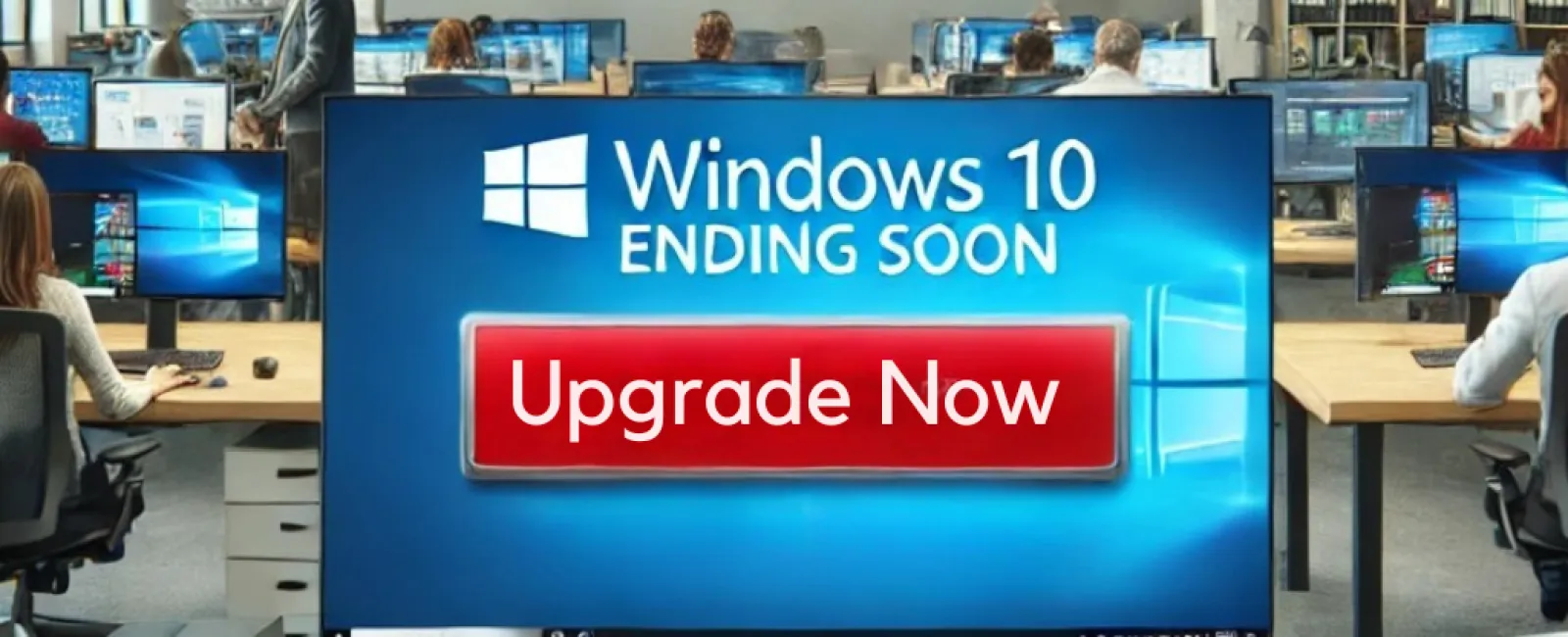April 14, 2025
Windows 10 End of Life: What It Means for Your Business (And Why You Need to Act Now)
📅 Mark your calendars: October 14, 2025. That's the day Windows 10 officially reaches end of life.
After this date, Microsoft will no longer provide security updates, bug fixes, or technical support—which means if your business is still running Windows 10, you're about to be at serious risk.
But here's the thing: It's not just your operating system that's in danger—your critical business applications, data, and productivity could all take a hit.
No More Security Updates = A Hacker's Playground
Once Windows 10 support ends, there will be no more security patches. That means any vulnerabilities found after October 14, 2025, will remain unpatched, leaving your systems wide open to cyberthreats.
What This Means for Your Business Apps:
🔹 Increased Risk of Cyberattacks - Without updates, your applications become easy targets for hackers, ransomware, and phishing attacks.
🔹 Compliance Nightmares - If you're in a regulated industry (healthcare, finance, legal, etc.), running unsupported software could lead to fines and compliance violations.
🔹 Business Disruptions - A single security breach could shut down operations, costing you time, money, and your reputation.
No More Feature Updates = Compatibility Problems
As software vendors roll out new updates, they'll eventually stop supporting Windows 10. That means:
⚠️ Frequent Crashes & Glitches - Applications may become unstable or fail to launch.
⚠️ Missing Out on Key Features - New software tools will be designed for Windows 11, leaving you stuck with outdated functionality.
⚠️ Security Gaps - Many app updates include critical security patches—but if your OS is outdated, you won't get the protection.
No More Technical Support = You're on Your Own
It's not just Microsoft pulling the plug—your third-party software vendors will stop supporting Windows 10 too.
🔹 No More Customer Support - If your apps stop working, you're on your own.
🔹 Limited Integration with New Tools - Modern software and cloud applications will be optimized for Windows 11, causing compatibility headaches.
🔹 Hardware Limitations - New devices, printers, and peripherals may not work with Windows 10 anymore.
Performance & Productivity Will Take a Hit
Let's be real—outdated systems slow everything down.
📉 Slower Performance - Older systems struggle to keep up with modern applications, killing productivity.
⏳ More Downtime - Frequent crashes and bugs mean more interruptions and lost revenue.
💰 Higher Maintenance Costs - Keeping legacy systems running can cost more in IT support than just upgrading.
What Should You Do?
🔹 Step 1: Back Up Your Data - Don't risk losing anything when upgrading.
🔹 Step 2: Decide Whether to Upgrade or Replace
- Check compatibility - Not all devices can run Windows 11. Use Microsoft's PC Health Check tool to confirm.
- Budget for upgrades - If your hardware isn't compatible, you'll need a plan for replacing outdated machines.
🔹 Step 3: Work with a Trusted IT Partner (Recommended)
- Get expert guidance on the best upgrade path for your business.
- Ensure a smooth transition with minimal disruption.
- Implement strong security measures to protect your data throughout the upgrade.
Don't Wait Until It's Too Late
The end of Windows 10 support is coming fast. Waiting until the last minute could leave your business vulnerable to cyberthreats, downtime, and compliance issues.
📢 Get ahead of the transition with a FREE Network Assessment.
🚀 Our experts will evaluate your IT setup, check application dependencies, and create a seamless transition plan to keep your business secure and productive.
📅 Book Your FREE Network Assessment Today
📞 Or call us at (866) 771-7348
Don't wait until your apps stop working. Take action now to protect your business from the risks of outdated technology.

